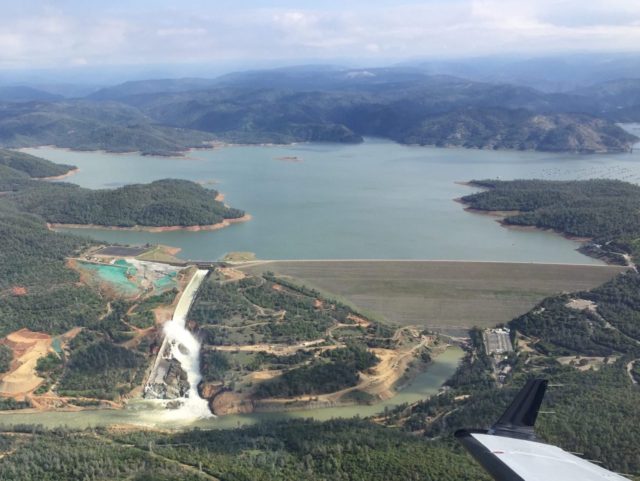California’s Department of Water Resources’ forensic analysis has reported that blueprints for the Oroville Dam and its spillway reveal that design defects were known when the dam opened in 1969.
The Federal Energy Regulatory Commission (FECR) issued a mandatory order on February 21 demanding that DWR conduct an independent forensic audit of the circumstances leading up to the February 7 spillway failures, evacuation of 200,000 residents, and near-catastrophic collapse of the spillway of America’s tallest dam.
DWR hired a six-man team of experts in March that delivered a devastating initial report in May that found at least 24 possible causes of the Oroville Dam spillway failure, including inadequate California Department of Water Resources maintenance, repair of cracks, thin concrete slabs, poor drainage, and use of weathered rock. The team stated: “Additional factors may be identified as the investigation proceeds.”
In their second interim report, the forensic team states that both state and federal officials, who regularly inspected Oroville Dam, over-relied on visual inspections. The experts contend that any regulator conducting a serious dam and infrastructure review should have reviewed blueprints, construction records and other documents. Had the regulators conducted proper reviews, the problems could have been found and addressed, the report suggests.
The forensic panel’s led inspector, John France, told the Sacramento Bee that records dating back to 1970s showed clear evidence of visible cracks in the concrete right after the dam opened in 1969. In perhaps the biggest construction defect, documents reveal uneven slab thicknesses, and that the dam’s drains were improperly designed to handle their rated water-flow capacities.
France emphasized that records show DWR only conducted visual inspections each year, and federal regulators only made visual inspections once every five years. It appears that neither the state or the federal government ever made a thorough review of the design blueprints since the dam was completed five decades ago. France added that it is the opinion of the experts that evidence of the dam’s defects “were all there in the files.”
Breitbart News reported in August that Oroville Dam failed to obtain a 50-year extension by January 31, 2007, and then operated on temporary one-year regulatory extensions for the next decade. But despite known safety concerns, the DWR’s Division of Operation and Maintenance issued a “Failure Mode and Effects Analysis” in 2014 that made seven top safety claims of “highly unlikely” for the risks of dam or spillway failure.
The forensic team commented that its final forensic audit will not be delivered until later this fall. It appears that the reason for the delay is concerns about the time available for Kiewit Corporation to complete $275 million in repairs to Oroville Dam’s main and emergency spillways before the start of the rainy season.
Breitbart News reported in July that a 123-page study by UC Berkeley’s Center for Catastrophic Risk Management found numerous defects in the dam itself. Despite crisis repair efforts, there are still what the study calls “Persistent existing ‘Leaks’ and ‘Wet Spots’ on and around the dam.”
Earlier this summer, it appeared that California could be headed for an extremely wet “El Niño” winter, caused by overheating of tropical waters in the Pacific. But surface temperatures in the key area of the equatorial Pacific Ocean have fallen from 1.3 degrees Fahrenheit above average on June 28, to 0.4 degrees below average in the latest reading.
The U.S. National Weather Center currently is predicting mild La Niña conditions this winter. The center forecasts that a weaker Pacific jet stream will allow freezing polar air to sweep down into the northern states and Midwest, while the South and the West Coast should see mild temperatures and average rainfall.

COMMENTS
Please let us know if you're having issues with commenting.